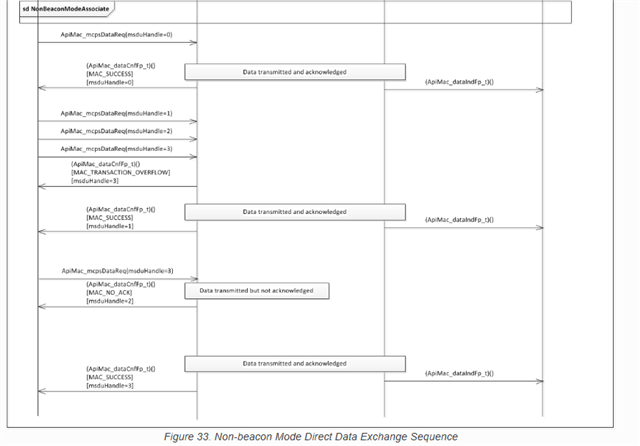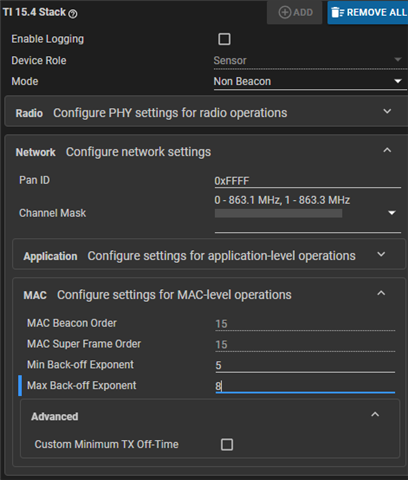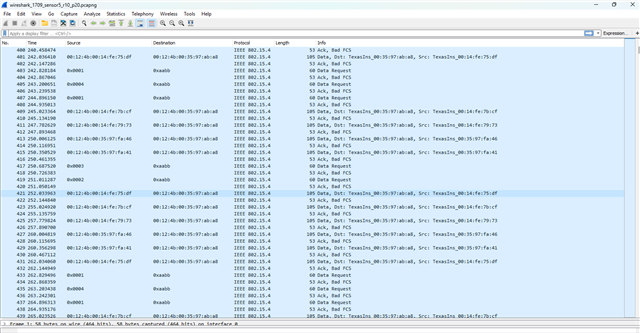Other Parts Discussed in Thread: SYSCONFIG
Tool/software:
Hi,
I am using TI stack 15.4 wireless stack for my wireless communication. I am using , PHY type: 5 kbps (SimpleLink Long Range), with ETSI regulation (863–869 MHz) - Non beacon mode.
In my setup I have 4 sensors and one collector and a additional sniffer to analyze the network. I have set the reporting interval as 10 seconds (sending the incremental data on each sensor) and the polling interval is set to 20seconds (not sending any data from the collector).
Sensor MAC ids:
00:12:4b:00:35:97:fa:46
00:12:4b:00:14:fe:75:df
00:12:4b:00:14:fe:7b:cf
00:12:4b:00:14:fe:79:73
Collector MAC id:
00:12:4b:00:35:97:ab:a8
When running this setup I observer two scenarios.
1. collector and sensors are all working fine i.e no packet losss and no disconnection.
2. Sensors are continuously disconnected (orphaned) and rejoining. Also many data lost
sniffer log:
...
In both scenarios HW setup is same and the code is also the same; nothing modified.
In the disconnection log I could see that the ACK is missing and due to the missing ACK, the sensors are orphaned.
Upon analysing the TI15.4 guide, in NBCN- direct data transfer sequence,
they didn't mention more about this ACK and how it is generated.
So My questions are,
a) What actually this ack? is collector is giving this ack?
b) The collector moves to Tx and sends ACK if any sensor packet is received.
Because when analyzing my attached images, in working condition the time difference between the next sensor packets is 500 to 600 ms. which means in between that collector sends the ACK and the network is fine.
In my disconnection images the sensor packets are triggered within 150 ms. Is it really a problem. Since It is a multi sensor network - each sensor can trigger packet at any time.
c) So in a multi-sensor network, is there any limitation or condition mentioned that sensor reporting packets should be triggered with more than 150ms?
Kindly anyone help me to understand this. As we are planning to develop mass production on gateway - sensor boards, we need to sort this multi sensor communication at high priority.
Thanks and regards,
Muniyappan R.M



